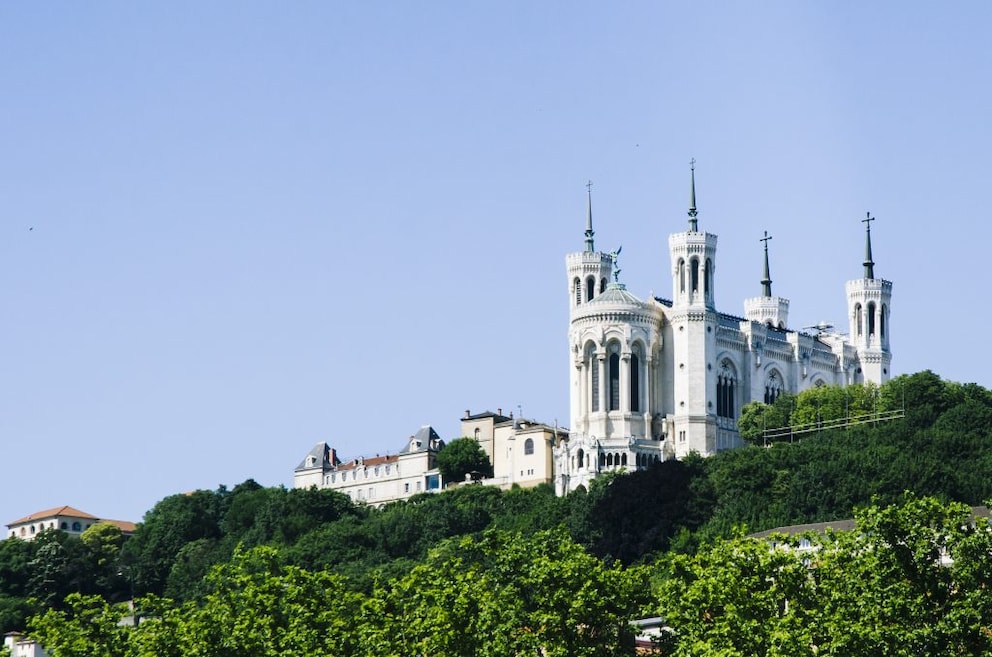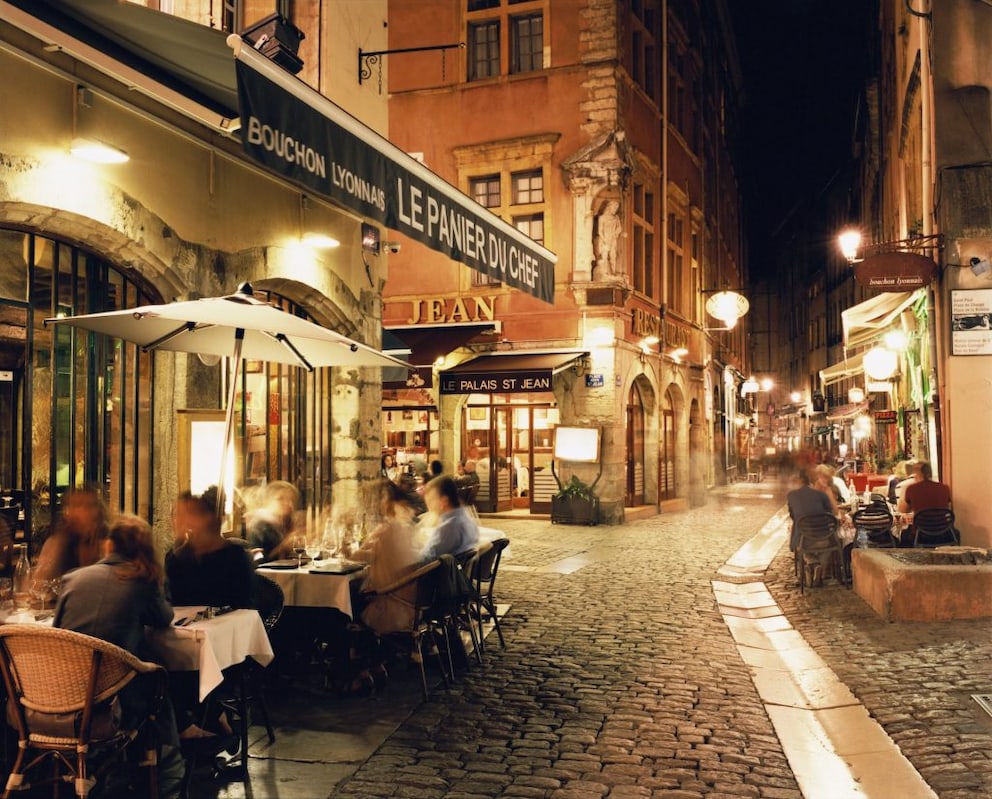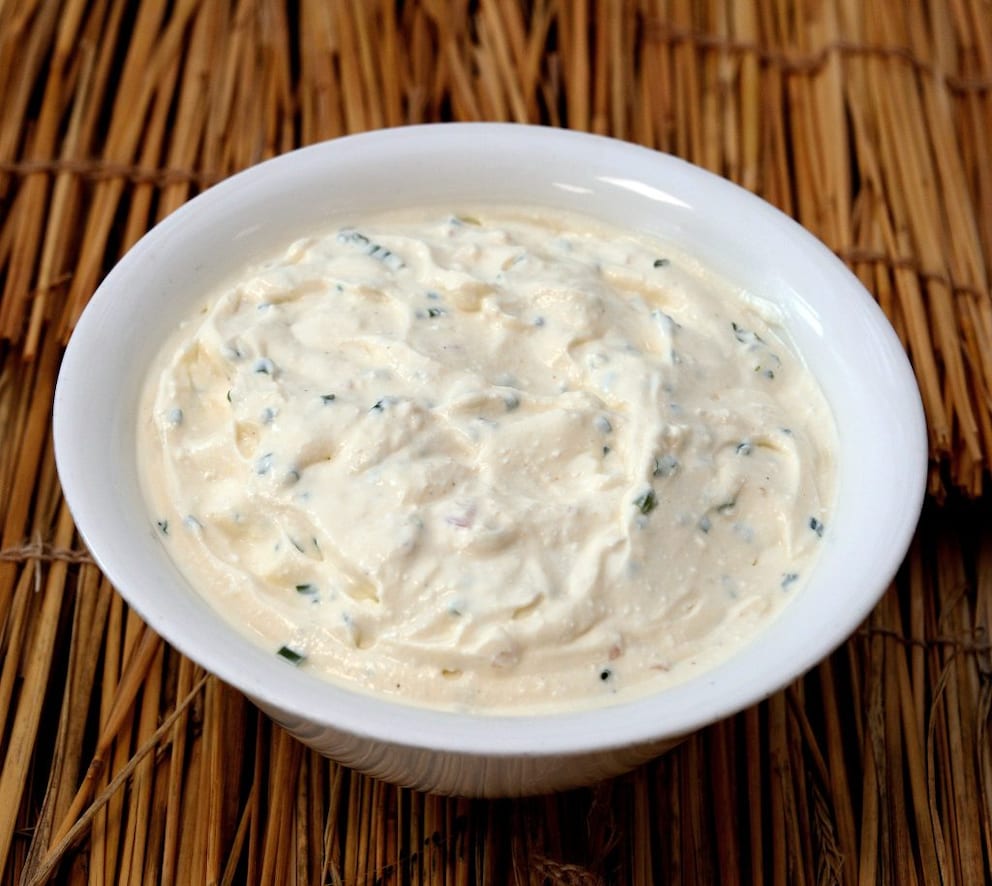September 23, 2024, 6:12 pm | Read time: 4 minutes
When you think of France, you often think of Paris – or Brittany, the Atlantic or Mediterranean coast. But a trip inland can also be worthwhile. For example, when it comes to the country’s third-largest city. TRAVELBOOK editor Larissa Königs was there and revealed her tips for a visit to Lyon.
Lyon is a city that many vacationers to France skip at first. The metropolis has a lot to offer but is still so compact that you don’t necessarily need a car. You can easily explore the city by public transport or on foot, even if you need to be a bit fit, as Lyon is relatively hilly. But what exactly should you discover during your vacation in Lyon? An overview.
What should you definitely see and experience in Lyon?
“Vieux Lyon” – the Renaissance old town

The old town of Lyon is a real highlight. It is also called “Vieux Lyon”, which translates as “Old Lyon” and is, after Venice, the largest collection of Renaissance buildings in Europe and is recognized as a World Heritage Site. According to the tourism website “france.fr“, it is divided into three districts: Saint Georges, Saint Paul and Saint Jean, with the latter being the heart of the old town.
The history of “Vieux Lyon” dates back to ancient Rome, although almost all of the current buildings date back to the 15th and 16th centuries. They were built by wealthy merchants who came to Lyon because of the numerous trade fairs that were once held there. To this day, the city is known primarily for its silk. The magnificent buildings of the wealthy merchants have also survived to this day – and are still beautiful to look at. Incidentally, they were once considered the tallest in Europe. Lyon was practically a medieval New York.
The hill and the Basilique de Fourvière

Climbing the Fourvière hill is another must-do activity. You can hardly miss it, as it can be seen from everywhere and towers over “Vieux Lyon.” You have to climb a few steps, so take your time unless you are in really good shape. The view of the city definitely makes up for it. In good weather, you can see as far as Mont Blanc.
While recovering at the summit, you can spend time exploring the Notre-Dame de Fourvière church. The basilica was built in 1872 in Byzantine style and has been a World Heritage Site since 1998. Here you can book tickets for unusual tours, for example at night.
The food and the “bouchons”

Lyon is known for its exceptionally good food. In fact, the city even holds the title of “Capitale mondiale de la gastronomie” (World Capital of Gastronomy). If you want to try the city’s cuisine, you should definitely go to a “bouchon”. This is the name of the traditional small inns in Lyon, which, like the food itself, are part of the region’s gastronomic heritage. Expect a communal dining experience; sitting at a table with strangers here is completely normal.
The food itself often takes some getting used to for Germans and is generally unsuitable for vegetarians and vegans, as there is a lot of meat, sausage, and offal. Classics of the local cuisine are the saucissons de Lyon (a sausage), the salade lyonnaise, which contains smoked bacon or chicken liver, and the tablier de sapeur, i.e., beef stomach. Lyon also boasts another culinary specialty: the unique dessert, “La cervelle de canut.” However, this is not a sweet dish, but a bowl of curd cheese with garlic and herbs. Incidentally, “cervelle de canut” translates as “brains of the silk workers.” If you are more interested in Lyon’s silk past, you should head to the Croix Rousse district, where the city’s silk weaving mills have been located since the 17th century and can still be visited today.


Complete work of art made from mortal remains St. Ursula is the eerie bone church of Cologne

Vacation in Italy Siena in Tuscany – the best sights and travel tips

Former working-class neighborhood Belleville — the trendy district of Paris
Further tips for Lyon
Which area is ideal for accommodation?
Medieval magic can be found in the middle of the old alleyways of “Vieux Lyon” – but it is also very touristy here. Alternatively, we recommend staying on the Presqu’île. The peninsula, formed by the Saône and Rhône rivers, is the center of Lyon, where holidaymakers will find numerous supermarkets, stores, restaurants, and bars, many of which are located on Rue Mercière.
What is the best way to get there?
Lyon can be reached both by car and via Saint-Exupéry Airport. Yet, the most stress-free travel option is by train. The only important thing is to travel to Lyon Part Dieu station, as this is the central station. Lyon Saint-Exupéry station is located further out at the airport, as the name suffix suggests. On the other hand, Lyon Part Dieu can be easily reached from Germany by TGV, for example from Frankfurt via Strasbourg, or you can take the Thalys to Paris and then travel another two hours further.

